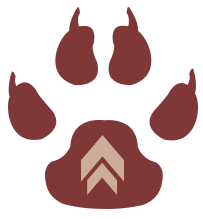The Italian Greyhound is extremely slender and barely over a foot tall, but has all the grace and sweetness of his taller Greyhound relatives. There is debate as to whether they were originally bred for hunting small game or meant to be simply a companion. In all likelihood, both are true, as they are adaptable to city and country life. The Italian Greyhound’s coat can be any color, except brindle and classic black and tan.
Is It The Right Breed for You?
Playful and intelligent, the Italian Greyhound is generally easy to train and prefers to spend most of his time with his owner. They like attention and affection, and are a peaceful, gentle friend to adults and children. Italian Greyhounds are an active breed that loves to run and play and requires daily walks. Their small size makes them ideal for an apartment and his short, smooth as satin coat makes him one of the easiest breeds to groom.
- Toy Group; AKC recognized in 1886.
- Ranging from 13 to 15 inches tall at the shoulder.
- Companion, small game hunter.
© The American Kennel Club, Inc.
Italian Greyhound Breed Standards
Toy Breed
General Appearance
The Italian Greyhound is very similar to the Greyhound, but much smaller and more slender in all proportions and of ideal elegance and grace.
Head
- Narrow and long, tapering to nose, with a slight suggestion of stop.
- Skull – Rather long, almost flat.
- Muzzle – Long and fine.
- Nose – Dark. It may be black or brown or in keeping with the color of the dog. A light or partly pigmented nose is a fault.
- Teeth – Scissors bite. A badly undershot or overshot mouth is a fault.
- Eyes – Dark, bright, intelligent, medium in size. Very light eyes are a fault.
- Ears – Small, fine in texture; thrown back and folded except when alerted, then carried folded at right angles to the head. Erect or button ears severely penalized.
Neck
- Long, slender and gracefully arched.
Body
- Of medium length, short coupled; high at withers, back curved and drooping at hindquarters, the highest point of curve at start of loin, creating a definite tuck-up at flanks.
Shoulders
Chest
Forelegs
- Long, straight, set well under shoulder; strong pasterns, fine bone.
Hindquarters
- Long, well-muscled thigh; hind legs parallel when viewed from behind, hocks well let down, well-bent stifle.
Feet
- Harefoot with well-arched toes. Removal of dewclaws optional.
Tail
- Slender and tapering to a curved end, long enough to reach the hock; set low, carried low. Ring tail a serious fault, gay tail a fault.
Coat
- Skin fine and supple, hair short, glossy like satin and soft to the touch.
Color
- Any color and markings are acceptable except that a dog with brindle markings and a dog with the tan markings normally found on black-and-tan dogs of other breeds must be disqualified.
Action
- High stepping and free, front and hind legs to move forward in a straight line.
Size
- Height at withers, ideally 13 inches to 15 inches.
Disqualifications
- A dog with brindle markings. A dog with the tan markings normally found on black-and-tan dogs of other breeds.
Approved December 14, 1976

